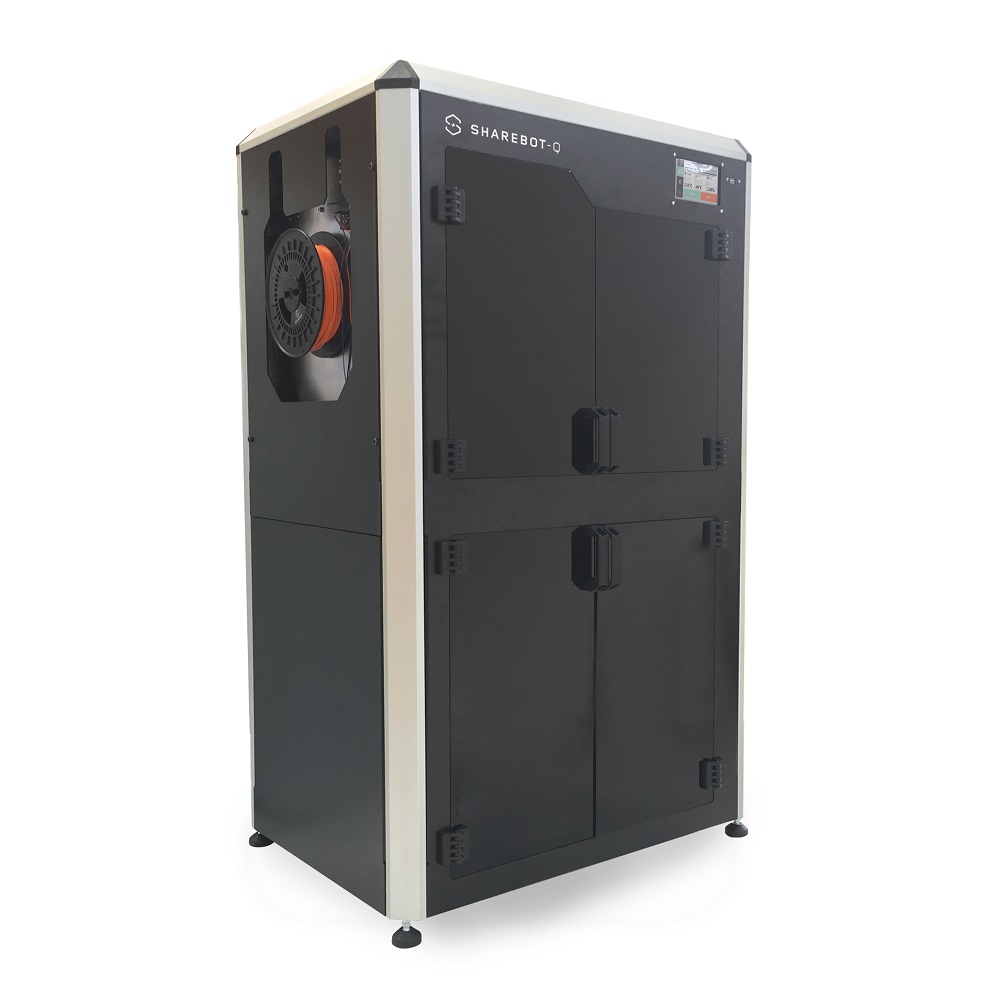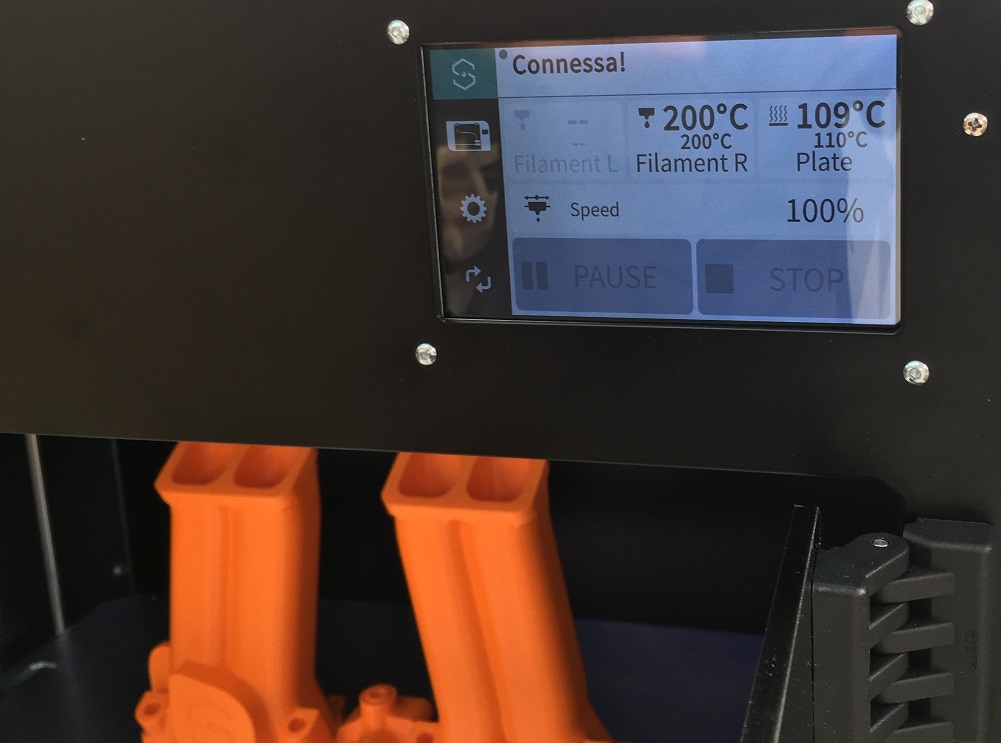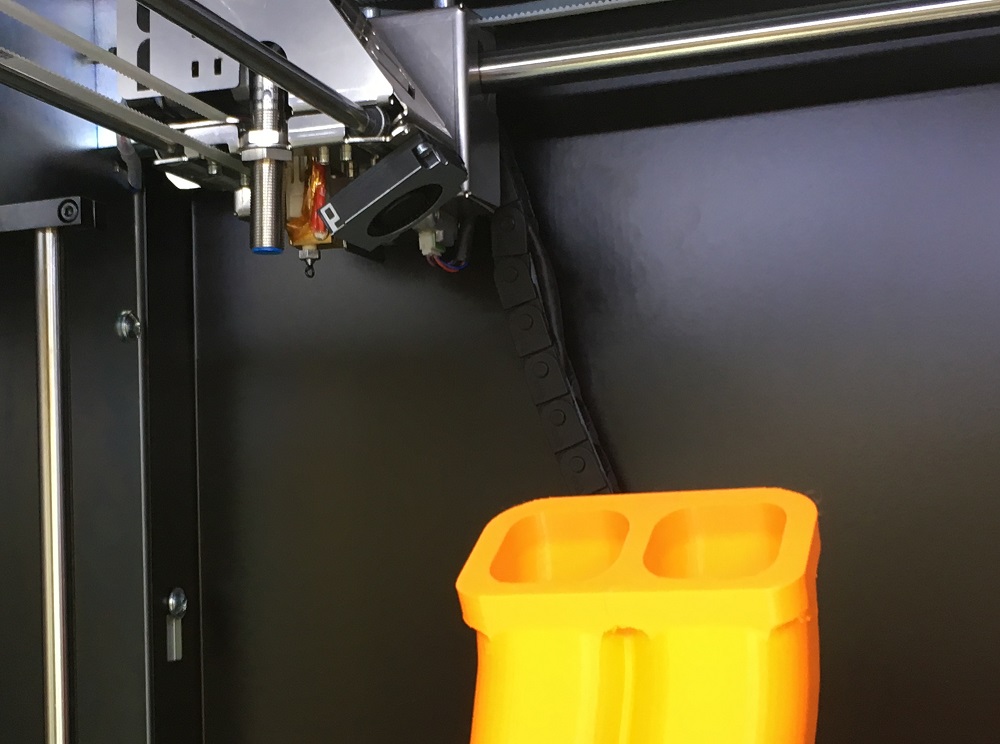Italy-based Sharebot has announced a rather large professional 3D printer, the “Sharebot Q”.
When I say large, I mean a build volume of 297 x 420 x 300mm, which is quite suitable for many industrial-sized prints. They say it is A3-sized, which in fact it is: A3, for those not familiar, is the ISO standard 2D paper size: 297 x 420mm. On the Q you certainly won’t be printing paper, but it’s an interesting milestone for the company.
However, size alone does not make a successful 3D printer. In fact, large prints tend to warp as the lengthy duration of the print permits more time for that to occur. It appears that Sharebot has taken this into account by providing a complete enclosure of the build volume to capture heat and prevent warping.
But what about the professional aspects of this device? Professional, to me, would suggest the machine is able to run reliably for long periods without significant attention. Does the Q accomplish this?
I think so, based on some of the features they’ve decided to include in the machine.
The Q is equipped with WiFi networking and a web interface, permitting almost complete remote operation, aside from the physical acts of loading spools and unloading prints. There’s also an integrated camera to show live views of the print’s progress.
This permits operators to lessen the time they require to monitor a print, or perhaps permit an operator to handle more devices simultaneously if a 3D printer farm were considered.
Physically, there are several interesting productivity features, such as a magnetically attached, but removable print plate. This feature could permit an operator to rapidly remove completed prints and immediately start a second job by inserting a clean, second magnetic plate before beginning print extraction from the first plate.
Another physical feature involves spools. The Q is able to handle standard 750g spools, as most machines do, but is also set up to handle 2.2kg spools, as you can see in this close up view of the spool mount area. Note the extra space around the 750g spool.
The larger-sized spools are ideal for long-running prints, which are the intention of this device. For some print operations, the larger spool could eliminate 2 of 3 potential spool changes. That’s significant if you’re running this machine flat out and paying for operator time.
The extruder mechanism is one of the strangest I’ve seen. Most filament-based 3D printers use either the direct (motor near the hot end) or Bowden (motor near the spool) style extrusion methods. But the Q actually has both! There is an extruder motor near the spool to push the filament through a tube to the hot end, and there’s also a motor on the print head that pushes the filament directly into the hot end and nozzle.
I can see this approach being useful, as some Bowden machines suffer from friction in the tube: the poor Bowden motor has to overcome the friction by applying much force, which sometimes ends up stripping the filament. The task is made far simpler by having the hot end pull the filament at the same time.
But this approach also introduces a new failure mode: should the two extruder motors not be synchronized perfectly in speed and engagement, the filament could be squished or stretched. Or more likely one of the two extruders would strip the filament again. It should be interesting to see what experience Q users find with this style of extrusion.
With this extruder, however, Sharebot says the machine can manage 0.05mm layers, which is quite good. They also state the machine speed as 24 cubic mm per second, which I can’t relate to; I haven’t seen speed specified in those units on many machines.
At this point it is not clear when Sharebot will release the Q, as it does not appear on their online store. The price is also not yet public, but more than likely this is a machine that would be priced at least at USD$5,000 or greater – more than a common desktop machine, but less than other professional machines.
Via Sharebot





